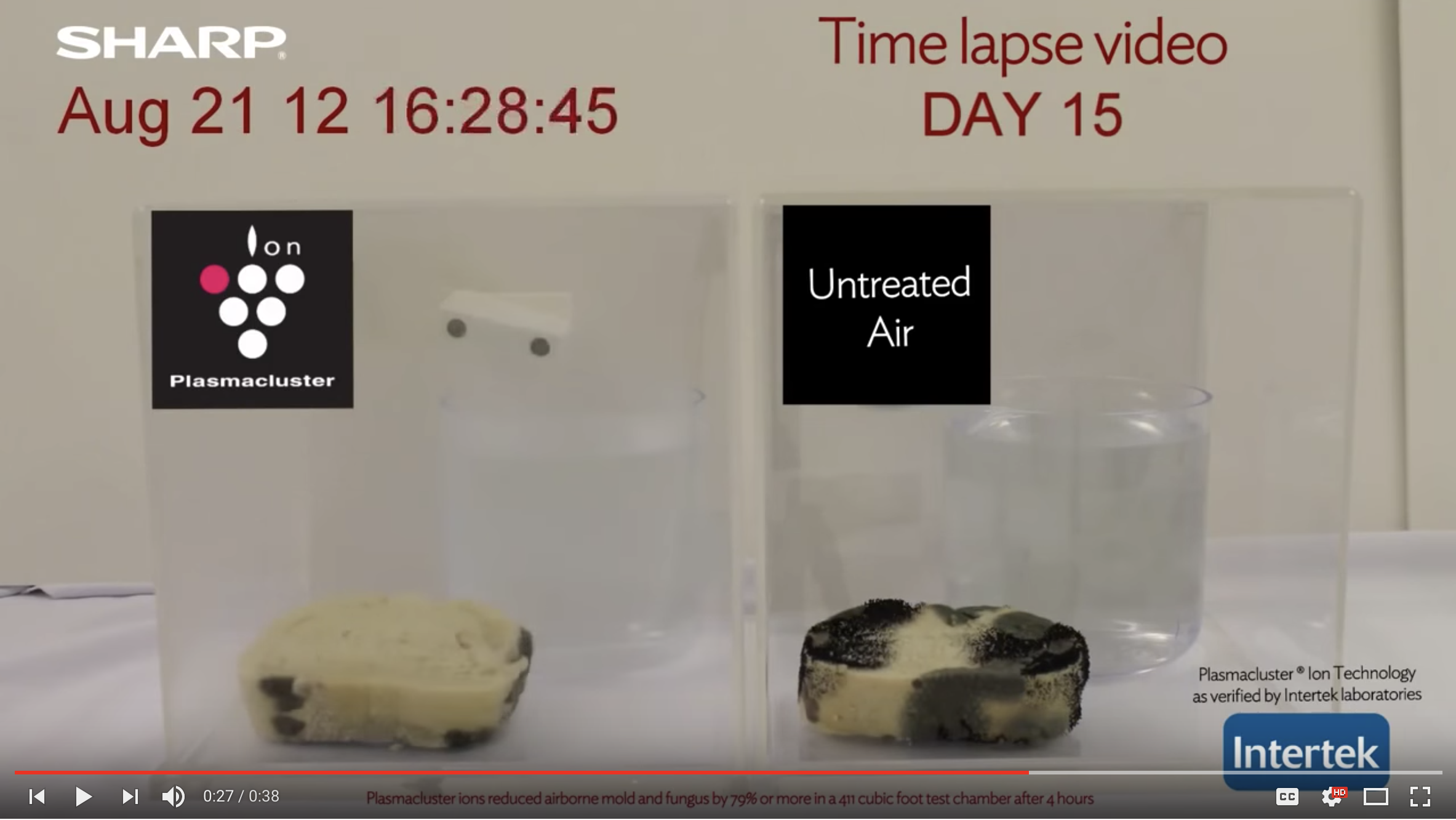

Fall isn’t quite here, but meteorologists are reporting on ragweed pollen counts associated with the end of summer. Fortunately, ragweed is one of the few allergens that doesn’t trigger my allergies. Like many, though, the end of summer signifies closing my windows and turning on the heat.
Seven years of allergy shots have all but cured my outdoor allergies, but the shots have barely made an impact on my indoor allergies of mold, mildew, dust mites, and a litany of other indoor, airborne allergens. Closing the windows and turning on the heat for me means watery and itchy eyes, sneezing, and it sometimes has me reaching for my rescue inhaler because of an asthma flare-up. My husband has similar but fewer reactions, and he doesn’t have asthma.
We’re not alone. According to the Asthma and Allergy Foundation of America, allergic rhinitis often called hay fever (indoor and outdoor) affects 6.1 million children and 20 million adults in the U.S.
Critical Facts
According to the American Lung Association’s (ALA) Asthma in Adults Fact Sheet, certain exposures to asthma triggers can cause asthma flare-ups.
In 2016, the ALA estimated that of the 20.4 million American adults that had asthma, 9.7 million Americans had an asthma flare-up.
When an adult has asthma, their lungs are extra sensitive to certain stimuli, or “triggers.” Triggers range from viral infections to allergies, to irritating gases and particles in the air. Each person reacts differently to the factors that may trigger asthma, including:
- respiratory infections and colds
- cigarette smoke
- allergic reactions to such allergens as pollen, mold, animal dander, feather, dust, food, and cockroaches
- indoor and outdoor air pollutants, including ozone and particle pollution
- exposure to cold air or sudden temperature change
- excitement/stress
- exercise
According to a report from the Environmental Protection Agency (EPA), a growing body of scientific evidence has indicated that the air within homes and other buildings can be more seriously polluted than the outdoor air, in even the largest and most industrialized cities. Other research indicates that people spend approximately 90 percent of their time indoors. That’s a sobering pair of findings indeed. The report goes on to say, “for many people, the risks to health may be greater due to exposure to air pollution indoors rather than outdoors.”
How to Avoid Allergies Caused by Indoor Allergens?
The first line of defense is removing everything from your home that is causing the allergy. My doctor gave me a simple list: remove pets, remove carpeting that can’t be washed often (especially wall-to-wall), replace fabric furniture with leather or plastic, avoid heavy drapery, dust and vacuum often, keep windows closed, avoid mold by sealing cracks in the house (my 125 year-old house), use a dehumidifier, run cooler showers, limit house plants, enclose bedding in plastic, and the list goes on. In essence, live in a plastic bubble.
Some of these are no-brainers and easy to accomplish. Others are nearly impossible because my family doesn’t live in a plastic bubble. There must be a better way.
Air Purifiers for Home
It’s surprising I haven’t yet purchased an air purifier. Before researching, I assumed these small home units couldn’t possibly have an impact. In researching for this blog with a keen personal interest, it’s possible that I am wrong.
I believe in researching products before I buy them, which is easy these days with online resources. An informed customer must be a better customer.
To get a quick glimpse of products in the category, I entered “air purifiers for home” into Amazon.com. Maybe there’s something to this category, given over 10,000 results were returned with prices and features all over the board.
Full Disclosure
I am writing this blog for Twice, which is sponsored by Sharp Home Appliances. Everything I stated about my allergy conditions, treatments and recommendations by my doctor are entirely true. When I accepted this assignment, I didn’t realize I would be interviewing a long-time CE industry friend and trusted colleague, Peter Weedfald, the Senior Vice President of Sales & Marketing at Sharp Home Appliances.
Given I will be closing up my house soon and turning on the heating system, after my conversation with Weedfald, I will soon be purchasing a Sharp Plasmacluster Ion air purifier. I am not requesting a discount off my purchase (fortunately prices on these units are pretty reasonable). I can’t provide a review because I haven’t purchased the product yet, but knowing Weedfald for nearly 20 years, I trust his assertions and the research I have done on Sharp’s patented Plasmacluster Ion (PCI) technology.
Since 2000, Sharp’s PCI technology engine has been deployed in top-brand refrigerators, cars, trucks, hospitals, office buildings, and more to remove airborne mold and dust allergens, suppress the activity of airborne viruses, and help with clinging odors. “Sharp officially has sold 70 million Plasmacluster Ion technology engines worldwide since 2001,” says Weedfald. Few people are aware that this technology is available to consumers in the form of home air purifiers.
Details that Matter
One of the reasons I never bothered to buy an air purifier for my home is because I was certain that it would only “purify” the air immediately surrounding the unit. I asked Weedfald to explain what separates Sharp’s Plasmacluster Ion air purification technology from others.
If you read my first blog, you may recall that I mentioned that Weedfald is passionate.
Sharp’s PCI system is both an active and passive air purification system, which in and of itself is not unique to Sharp. The Plasmacluster Ion is. Active air purification systems don’t depend on the air passing through the filter. “The distinguishing fact is that when you take a Sharp air purifier, which has Plasmacluster Ion technology, and place it in the room, it creates positive and negative ions. These ions are really hydrogen and oxygen stuck together. They fly through the air, looking for viruses, bacteria, pet dander, mold, mildew, and odors—anything they can attach themselves to. Then the Plasmacluster Ion steals the hydrogen, and happily floats away as water vapor, while the remains of the now inactive pollutant, simply falls apart.” says Weedfald.
Once the Plasmacluster Ions take all of the hydrogen out of a pollutant, any leftover bits normally get stuck to and whisked-away in the newly created water molecule. Still, I am inclined to vacuum.
All of Sharp’s air purification systems have True HEPA filters. “The benefits of True HEPA are there, plus the benefits of PCI,” says Weedfald. Unlike most home air purifiers with HEPA filters needing to be changed every few months, the HEPA filters in Sharp’s air purification units only need to be changed every two to five years, depending on the unit. “Our goal wasn’t to make points on filters for revenue and profit,” explains Weedfald. “Our goal was to deliver the best possible experience around air purification.”
Something most people wouldn’t think about when researching an air purification system is that they can produce ozone, which we all know isn’t a good thing. Sharp’s Plasmacluster Ion air purifiers are CARB Certified (California Air Resources Board), because they produce an insignificant amount of ozone.
“For me, more than anything, the only thing I would want to do is to get people in America to understand air purification, and to take notice, and then study in their own ways,” says Weedfald. “If you really care about people, whether they’re working at a store, or they’re at home, wherever, then simply better living means you’d better have a very simple solution that’s better than what’s out there now.
Sure, we have True HEPA, and Sharp HEPA filters may last longer than most. True HEPA is great. A lot of products have it. But only Sharp has PCI technology that nobody can duplicate. And that means you’ll have a better, happier lifestyle.”
Check out these two videos for a down and shocking view of air pollutants found in the home.


Read the full blog series on Simply Better Living














